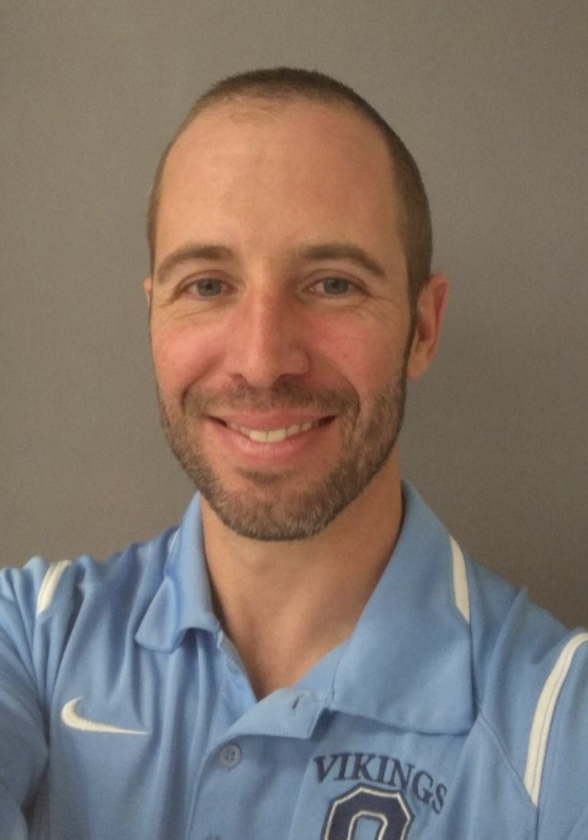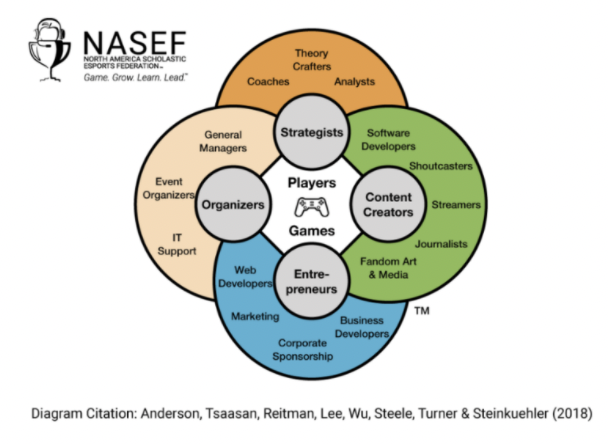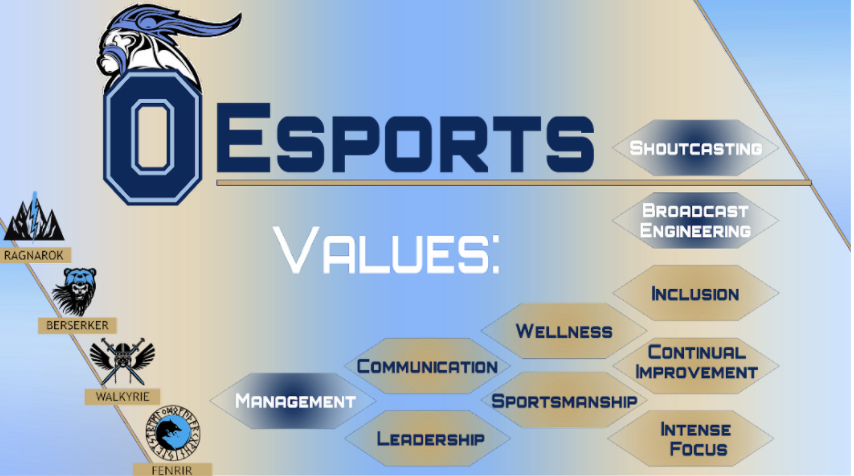
When I ended up needing to coach my kid’s soccer team — unlike Ted Lasso — I’d already played soccer as a kid. I knew the rules and was reminded after just one coaching clinic that all the drills and activities haven’t really changed in decades.
When students asked me to coach an esports team, I had never played any of the games. I didn’t distinguish between an esports team and a gaming club, didn’t notice the word “esports” is plural and basically had no idea what I was getting into.
But I’ve built a team that has earned many high-placed finishes in competitions, and you can too.
What is esports?
Esports refers to competitive multiplayer video games, typically titles that are fun and accessible (low skill floor) but have a thriving professional scene (high skill ceiling). The resulting broad player pool and potential for extreme skill expression are two factors driving viewership on platforms such as Twitch and YouTube Live. Now even mainstream media like ESPN are involved, which in turn is a big component in funding the esports ecosystem.
Why is it good for high school students?
Participation in extracurricular activities of any kind is associated with significant improvements in standardized test scores, GPA, daily attendance and even college completion. Furthermore, participation in activities drives new friendships and socio-emotional learning, especially around self awareness, social awareness, relational skills, resilience and persistence.
But more than 20% of students don’t participate in any extracurriculars, yet 97% of teenage boys and 83% of teenage girls play video games of some kind.
Esports is the missing extracurricular activity many of these underserved students flock to.
Broad-based appeal is best
From all that, esports sounds like the magic way to get those disconnected kids involved in both academics and friendships. What’s hiding in those numbers, though, is that “gaming” isn’t a homogeneous entity. To have broad appeal, esports teams need to offer multiple titles across multiple platforms. My team offers League of Legends, Overwatch and Rocket League and is adding Super Smash Bros. and Chess.
We also cater to both competitive and casual players, offering serious practices, matches and varsity athletics recognition to the former and obligation-free Fun Fridays to the latter. We have a dedicated team for streaming, content creation, broadcast engineering and extreme PC-building. And we try to get kids connected to college recruitment and scholarship programs.
All of this has grown our program to a stable 50 to 70 players per season.
How to create purposeful practice
So how do can a school tackle this venture with only one adult whose familiarity with the games being played is limited? The key is building and enforcing purposeful practice structures with student team captains empowered to run practices.
- Encourage individuals to use goal-setting and metrics to track their own skill development.
- Pop between different teams’ practices, and provide feedback on the communication quality rather than on game content.
- Trust but verify that your League of Legends players are using data-analysis packages like Mobalytics, that Rocket League players are implementing the Cloud9 Training Ground mechanics drills, and that Overwatch players warm up in Aim Trainer and Quick Play. All players should do one set of weights, one round of stretches and one chapter in their next book.
- Watch for friction in team dynamics, and pull veteran players aside for a chat on how they can manage and resolve it.
- Start with as big a recruiting drive as you can so you don’t risk having to forfeit if all players don’t show up. This also allows you to bench a player if they’re not living up to expectations.
Beyond the actual gameplay
- Take advantage of title-specific instruction offered in free master classes and clinics offered by NASEF, Cloud9 Training Grounds and others. Look for leaders who will focus on the development of the whole student in addition to in-game skills.
- Encourage students to learn about esports career pathways in addition to gameplay. They can support your teams or join NASEF’s Beyond the Game challenges for practical experience in the four areas outlined in diagram below.
- Connect to a strong community of practice. Ask questions, take advantage of free training and webinars, socialize and even play a game or two. NASEF Community and Coach Rivals are two of my favorite Discord servers. “The Academy of Esports” is my favorite YouTube Podcast. And SkillCapped is great for League of Legends game-specific knowledge.

What tools do you need?
Kids need to be in the same room to build a team culture, so you’ll need a lab of half-decent computers. A big TV and Nintendo Switch is a bonus. You’ll also need Discord, a multipurpose communication platform that facilitates text, voice and internal livestreaming of gameplay. This also enables remote practice, remote coaching and even remote competition capabilities. Although moderating large Discord servers has proven challenging despite some excellent strategies for doing so, my experience has been great with a smaller, school-only server.
The few times have I seen posts reflective of poor digital citizenship, multiple veteran players — who have bought into the positive team culture we’ve built — have immediately squashed it. Whether they have admin-level privileges, the students have a sense of ownership of the community platform and feel empowered as moderators. This is the holy grail of digital citizenship that schools so often talk about but seem to have little direct impact on.
As an aside, our team has won awards in video creation and has assisted nearby schools in starting their own esports programs.
Overwhelming but rewarding
In the future, and to be line with Academy of Esports podcasts/interviews, we may at some point want an army of coaches with deep game knowledge and experience to help us win championships. In the meantime, the goal of most K-12 programs instead should be on attracting and retaining a broad group of students and on developing strong institutional knowledge, culture and systems. This lets students handle their own day-to-day coaching and skill development. After all, that’s the valuable life lesson in all of this.
Meanwhile, mixing on- and off-campus practices using Discord will liberate the coach to occasionally contemplate the meaning of sustainability and work-life balance — before once again trying to figure out which of the 50 kids didn’t turn in their permission slip and media release waiver.
Alex Wurden teaches physics, chemistry and computer science at Oakmont High School in Roseville, Calif., and has coached the esports team for four years now. He is a NASEF Scholastic Esports Fellow and is self-taught in OBS Studio and Adobe After Effects. His free coaching support website is continually updated.
________________________________
If you liked this article, sign up for SmartBrief’s free email newsletter on EdTech. It’s among SmartBrief’s more than 250 industry-focused newsletters.
More from SmartBrief Education:
